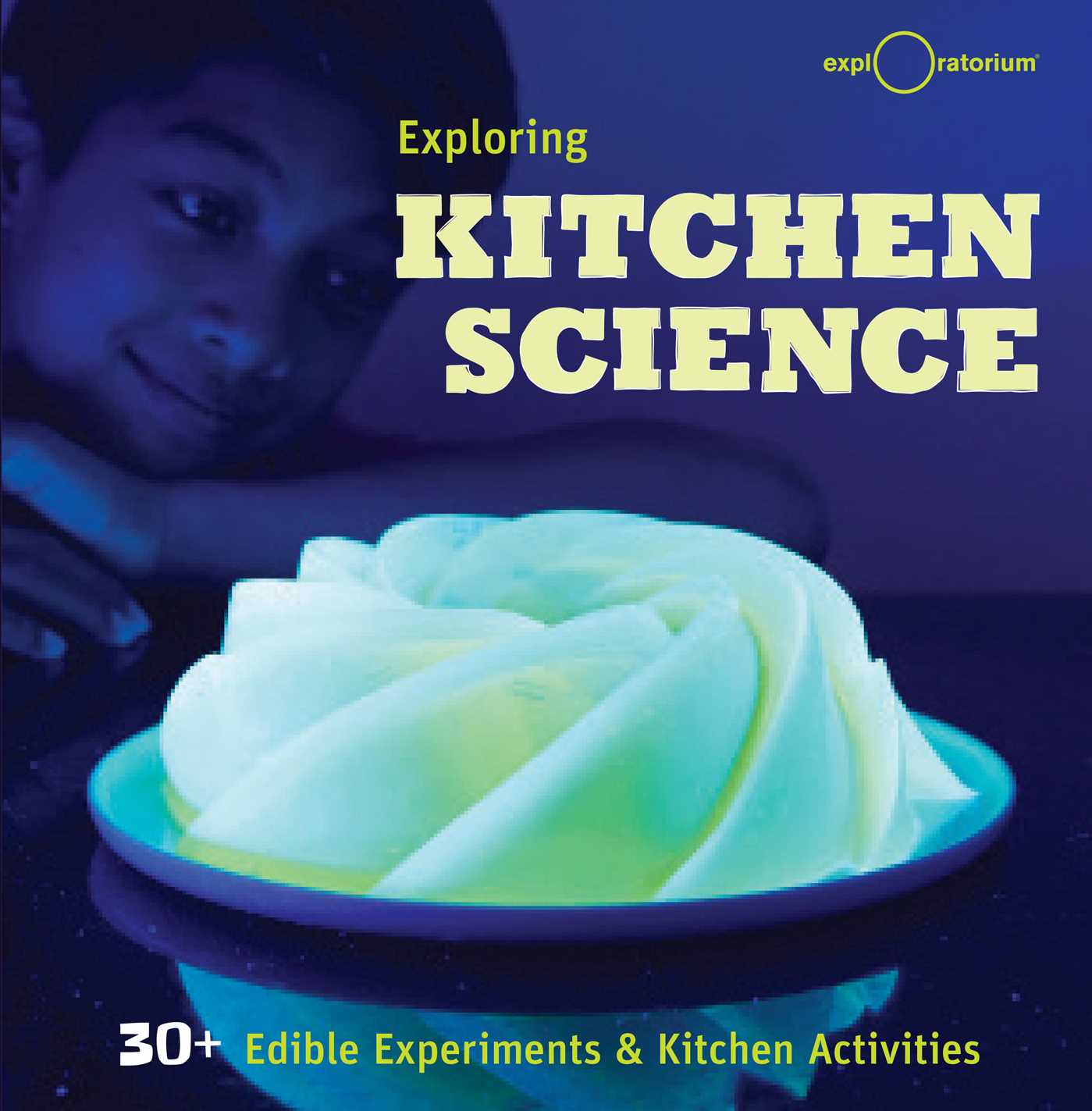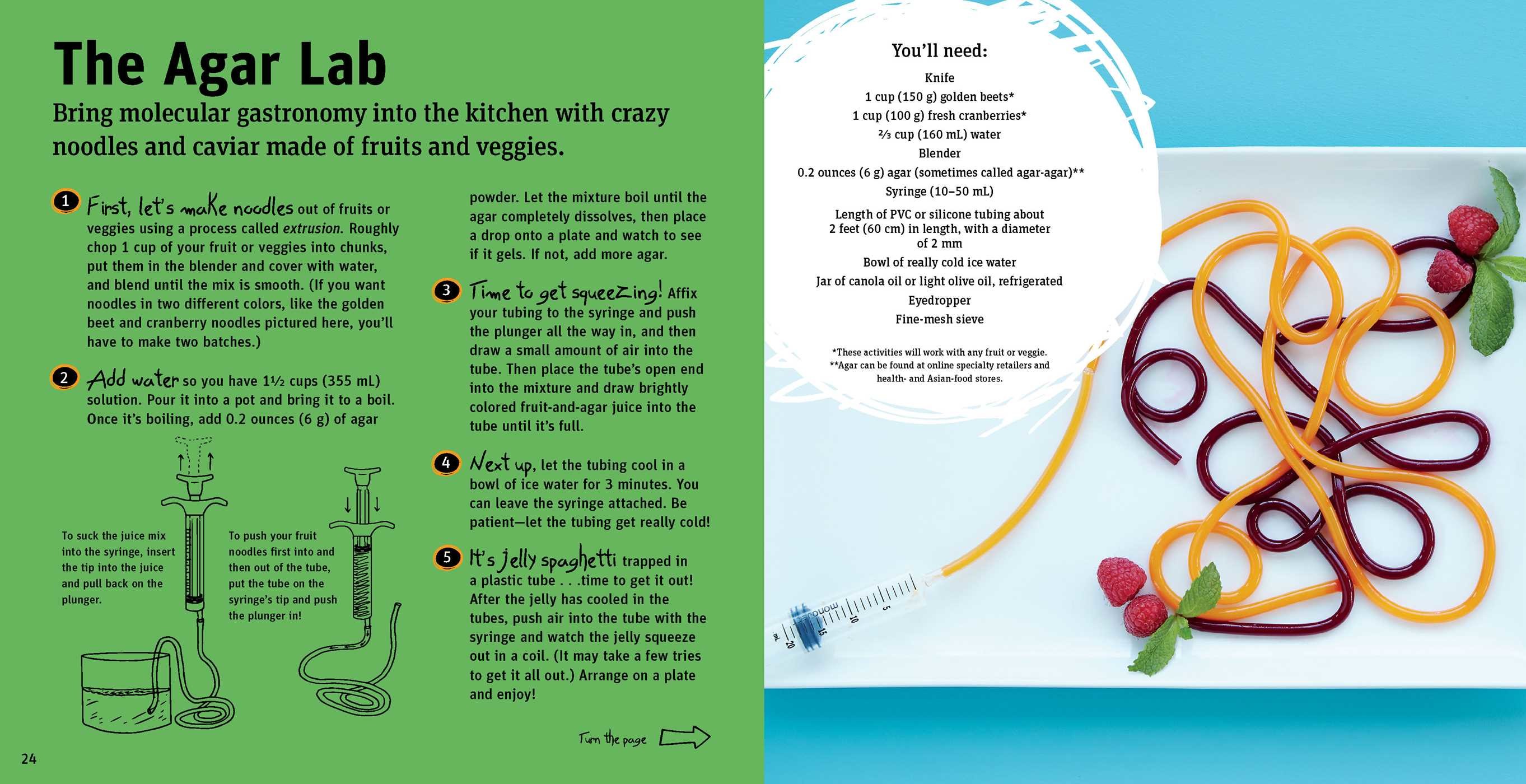Get our latest staff recommendations, classroom reading guides and discover assets for your stores and social media channels. Receive the Children’s Bookseller newsletter to your inbox when you sign up, plus more from Simon & Schuster.If you are an independent bookseller in the U.S. and would like to be added to our independent bookseller newsletter, please email indies@simonandschuster.com
Published by Weldon Owen
Distributed by Simon & Schuster
Table of Contents
About The Book
Did you know that your kitchen is actually a secret laboratory where tons of crazy-cool science goes down every day? Or that your fridge is jam-packed with chemistry materials? Join the world-famous Exploratorium for 30+ delicious discoveries, including the science of food, cooking, baking, nutrition, and taste.
The Exploratorium’s Exploring Kitchen Science is your hands-on guide to exploring all the tasty chemistry that goes on all around you—from burning a peanut to understand how calories work to making blinking rock candies with LEDs inside, from cooking up oobleck as a wild and wacky lesson in matter to making ice cream with dry ice!
Watch Mentos and Diet Coke explode, Styrofoam shrink in a pressure cooker, and marshmallows duke it out.
Make dyes from onionskins, tangy and yeasty sourdough bread, noodles of fruit, pickles a power source, and glow-in-the-dark Jello.
Use cabbage juice as a pH indicator and salt and olive oil as a lava lamp.
Whip up tasty treats while you explore all the unexpected science that’s going on inside your very own kitchen. Cook, mix and microwave your way through Exploring Kitchen Science and learn some cool stuff along the way.
The Exploratorium’s Exploring Kitchen Science is your hands-on guide to exploring all the tasty chemistry that goes on all around you—from burning a peanut to understand how calories work to making blinking rock candies with LEDs inside, from cooking up oobleck as a wild and wacky lesson in matter to making ice cream with dry ice!
Watch Mentos and Diet Coke explode, Styrofoam shrink in a pressure cooker, and marshmallows duke it out.
Make dyes from onionskins, tangy and yeasty sourdough bread, noodles of fruit, pickles a power source, and glow-in-the-dark Jello.
Use cabbage juice as a pH indicator and salt and olive oil as a lava lamp.
Whip up tasty treats while you explore all the unexpected science that’s going on inside your very own kitchen. Cook, mix and microwave your way through Exploring Kitchen Science and learn some cool stuff along the way.
Excerpt
Dance Up A Batch of Butter
Several marbles
Several glass or plastic jars (baby food jars are great)
1 cup (235 mL) heavy cream
Parsley, chives, garlic, or orange zest,
1. Put one marble in each jar. Divide the heavy cream among the jars and seal each
one tightly—you don’t want to fling dairy products all over the kitchen.
2. Time to shake it! We mean it—shake the jars like crazy. The marbles will fly around inside, as will the cream. You can share the shaking with a friend, or carefully roll them on the ground.
3. At first you’ll hear the marble kicking around inside the jar. When you’ve been shaking it for a while, it’ll start to get quiet and then hush up completely. Keep shaking and soon you’ll see a chunk of butter starting to form.
4. Once you,ve got a good clump, remove the marble, give your butter a rinse, and spread it on a slice of bread near you!
What’s the Deal?
Heavy cream is an emulsion: a substance that occurs when droplets of one type of liquid float in another without mixing together. The fat molecules in heavy cream don’t mix with the water molecules; they prefer to stay suspended as distinct globules without bonding to any H20! But when you shake the heavy cream, those fat molecules slam together and—if they slam hard enough—they start to stick together and form butter. The marble helps speed up that process and gives the fat something to gather around. The fat glob gets bigger and bigger until there is a ball of mostly fat with some water molecules mixed in, and you have a delicious spread.,
Several marbles
Several glass or plastic jars (baby food jars are great)
1 cup (235 mL) heavy cream
Parsley, chives, garlic, or orange zest,
1. Put one marble in each jar. Divide the heavy cream among the jars and seal each
one tightly—you don’t want to fling dairy products all over the kitchen.
2. Time to shake it! We mean it—shake the jars like crazy. The marbles will fly around inside, as will the cream. You can share the shaking with a friend, or carefully roll them on the ground.
3. At first you’ll hear the marble kicking around inside the jar. When you’ve been shaking it for a while, it’ll start to get quiet and then hush up completely. Keep shaking and soon you’ll see a chunk of butter starting to form.
4. Once you,ve got a good clump, remove the marble, give your butter a rinse, and spread it on a slice of bread near you!
What’s the Deal?
Heavy cream is an emulsion: a substance that occurs when droplets of one type of liquid float in another without mixing together. The fat molecules in heavy cream don’t mix with the water molecules; they prefer to stay suspended as distinct globules without bonding to any H20! But when you shake the heavy cream, those fat molecules slam together and—if they slam hard enough—they start to stick together and form butter. The marble helps speed up that process and gives the fat something to gather around. The fat glob gets bigger and bigger until there is a ball of mostly fat with some water molecules mixed in, and you have a delicious spread.,
Product Details
- Publisher: Weldon Owen (October 20, 2015)
- Length: 112 pages
- ISBN13: 9781616288006
- Ages: 8 - 12
Browse Related Books
Resources and Downloads
High Resolution Images
- Book Cover Image (jpg): Exploring Kitchen Science Hardcover 9781616288006











